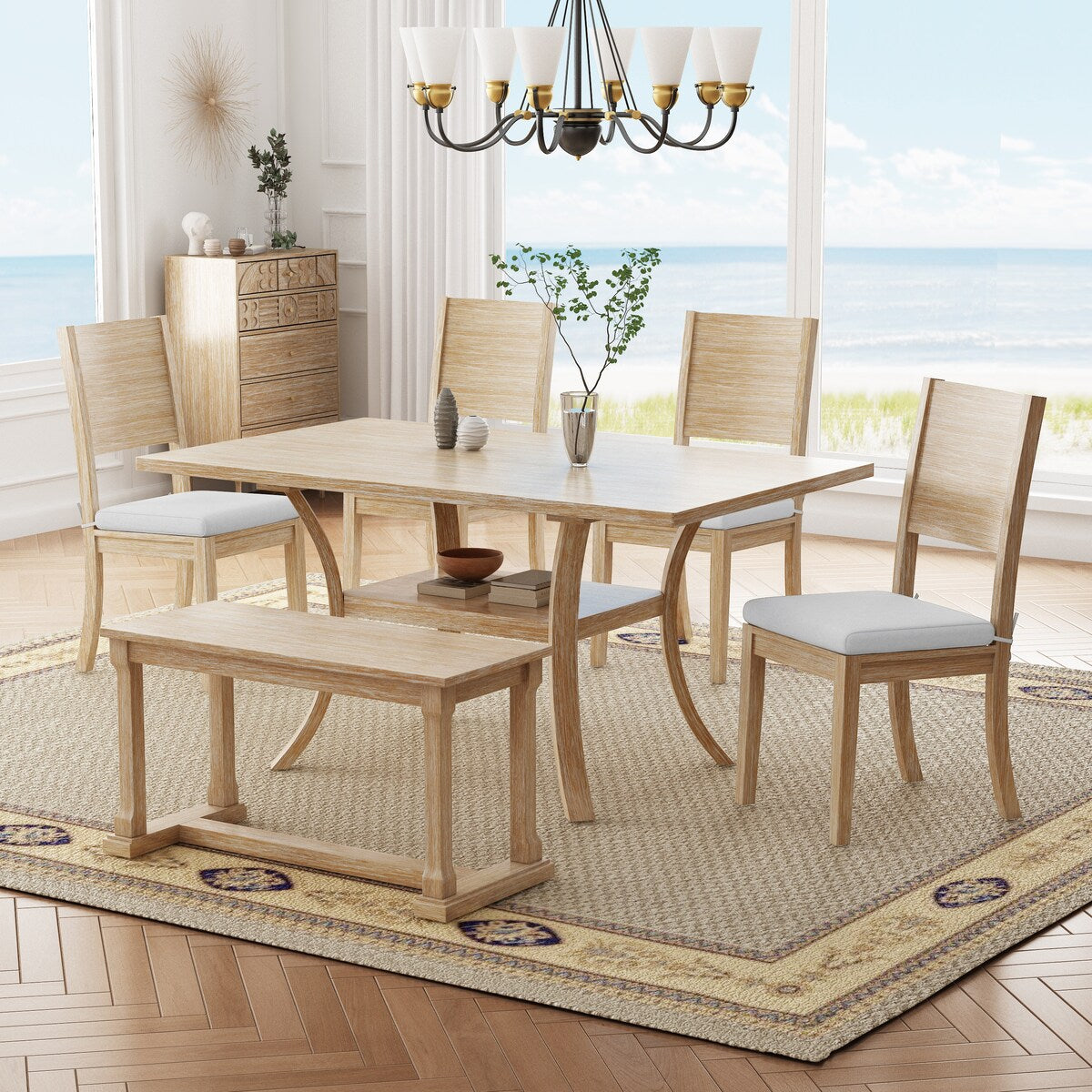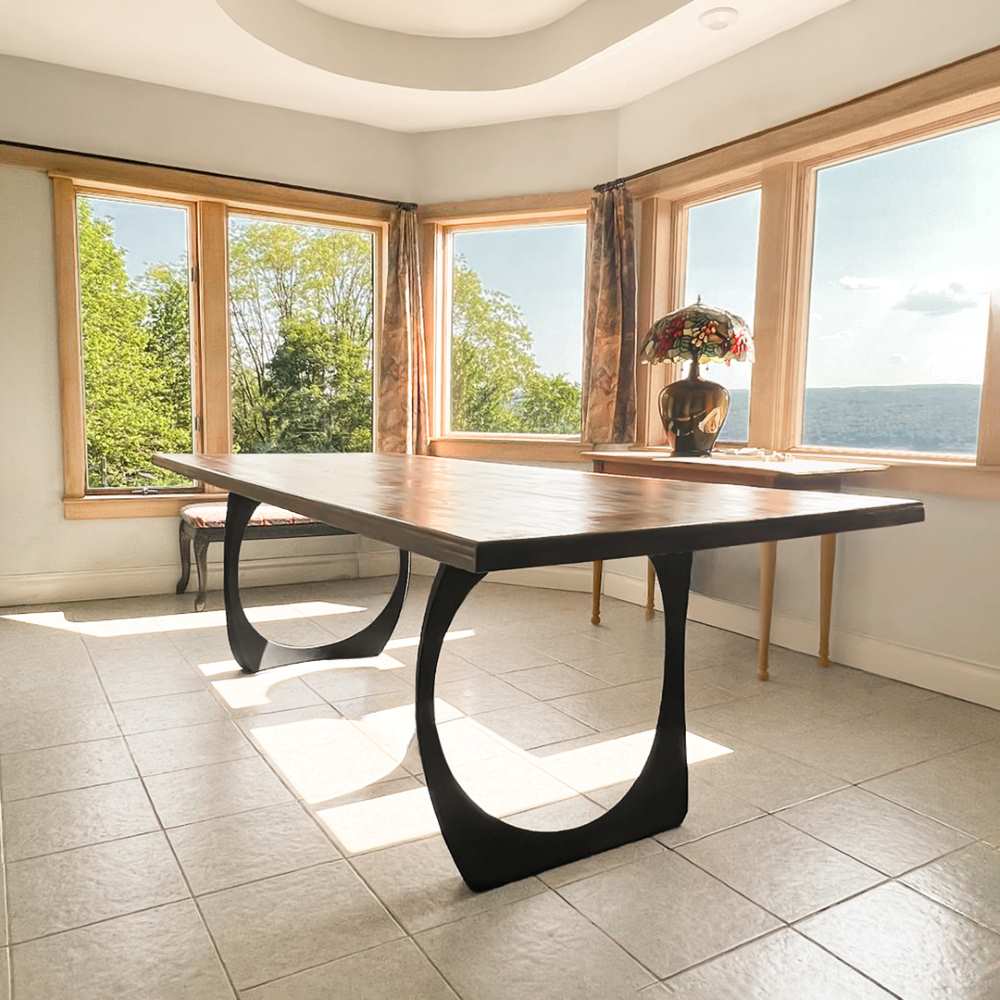Why Custom Dining Room Table Legs Are Worth the Investment
How to Select the Perfect Dining-room Table Legs for Your Home Décor
Choosing the perfect eating room table legs is a nuanced process that calls for careful factor to consider of various components, including your space restraints, aesthetic choices, and functional demands. The interplay between designs, products, and measurements can dramatically affect the ambiance of your dining location, making it vital to approach this choice methodically.
Assess Your Eating Space
Assessing your eating area is vital for choosing the right table legs that enhance both visual appeals and functionality. Begin by gauging the measurements of your eating area, consisting of ceiling elevation, floor room, and distance to other furniture. This information will certainly aid identify the appropriate size and height of your dining table, which straight influences the option of table legs.
Next, take into consideration the design and format of your eating space. An open-concept design might benefit from table legs that supply aesthetic agility, such as slender metal or acrylic alternatives. On the other hand, a more standard setup may ask for sturdy wooden legs that give a feeling of permanence.
Assess the existing color palette and products in your eating location. Harmonizing the table legs with these components develops a cohesive look that boosts the total style.
Inevitably, a detailed assessment of your dining space will certainly guide you in making an educated decision, making certain that your table legs not just boost the visual allure yet additionally serve sensible functions.
Consider Your Design Preferences
When picking eating area table legs, it is vital to mirror on your individual style preferences, as they substantially influence the total visual of your eating area. Your choice of table legs can either enhance or contrast with existing décor, making it crucial to straighten them with your preferred indoor layout theme.
If your home leans in the direction of a modern aesthetic, consider sleek metal or minimal wooden legs that provide a tidy, minimalist appearance. For a more typical method, luxuriant wood legs with complex makings can include a touch of style and sophistication. Industrial designs profit from robust, raw products such as reclaimed wood and metal mixes, mirroring a tough charm.
In addition, farmhouse and rustic designs typically favor strong, chunky legs that evoke a feeling of heat and comfort. On the other hand, if your décor is eclectic, you may choose unusual shapes or a mix of materials to produce visual passion.

Evaluate Product Options
The choice of material for eating area table legs plays a crucial duty in both longevity and aesthetic allure. Typical materials include wood, steel, and composite choices, each offering distinct characteristics that can affect the overall look and long life of your table.
Wood is a traditional selection, recognized for its heat and versatility. Hardwoods like oak and walnut provide phenomenal stamina and can be ended up in numerous spots to match any kind of design. Softwoods like want are more vulnerable to scrapes and dents, making them less excellent visit this website for high-traffic areas.
Steel legs, commonly crafted from steel or light weight aluminum, show modernity and industrial beauty. They are resistant and extremely long lasting to use, making them appropriate for family members with youngsters or frequent events (dining room table legs). Furthermore, metal can be ended up in various colors, boosting the personalization opportunities
Composite products, such as MDF or laminate, offer price and varied layouts. While commonly much less resilient than solid timber or steel, they can still supply a stylish appearance and are often simple to preserve.
Eventually, the product you choose should align with your lifestyle, visual choices, and the degree of use your table will certainly experience.
Determine Height and Dimension
Selecting the suitable elevation and dimension for your dining-room table is necessary for both functionality and comfort. The standard elevation for eating tables typically varies from 28 to 30 inches, allowing adequate legroom for most people when seated. It is crucial to think about the dimensions of your eating area and the kinds of chairs you plan to use.

Moreover, think about the proportions of your dining-room. A bigger table in a spacious area can develop a grand atmosphere, while a smaller table functions well in even more intimate setups. Inevitably, the ideal height and size will harmonize with your overall design and boost the dining experience for you and your guests.
Explore Modification Possibilities

Additionally, the layout of the legs can be tailored to fit various designs, such as rustic, contemporary, or industrial. For instance, tapered legs can evoke a mid-century contemporary feeling, while beefy, block-style legs may reverberate with typical or farmhouse design.
House owners can also check out shade finishes, from natural timber stains to repaint, enabling them to match or comparison with the table top and surrounding decor.
Moreover, leg elevation can be gotten used to suit particular seating arrangements or individual choices, enhancing both convenience and functionality.
Last but not least, distinct embellishments, such as carvings or decorative brackets, can better customize the table legs, making the eating experience not simply a declaration but a dish item in the home. By thinking about these personalization options, homeowners can develop a dining area table that genuinely mirrors their individuality.
Conclusion
Choosing the suitable dining space table legs calls for cautious consideration of various factors, including the dimensions of the eating area, design preferences, material toughness, and desired elevation. Personalization alternatives additionally boost the capacity to attain a cohesive aesthetic that complements the overall decoration. By methodically evaluating browse this site these elements, home owners can make sure that the chosen table legs not just fulfill functional requirements yet additionally add positively to the dining experience and atmosphere of the home.
Choosing the optimal eating space table legs is a nuanced process that calls for cautious factor to consider of different elements, including your space restraints, aesthetic choices, and useful requirements.Examining your eating space is essential for picking the right table legs that match both aesthetic appeals and functionality.When figuring out size, determine the area where the table will be put to guarantee it fits pleasantly, allowing for at least 36 inches of clearance around the table for easy movement. A bigger table in a roomy area can produce a grand setting, while a smaller table functions well in even more intimate setups.Selecting the ideal dining area table legs needs careful consideration of numerous factors, including the dimensions of the eating room, design preferences, material durability, and wanted elevation.